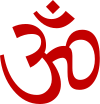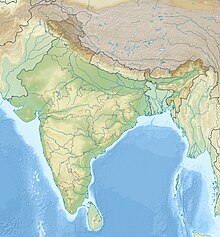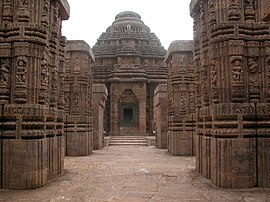३० जून २०१५ सूर्यदेव मंदीर
कोनार्क ओरिसा - 30th JUNE 2015 SUN TEMPLE KONARK ODISHA

   |  Where the Language of Stone Where the Language of Stone defeats the Language of man defeats the Language of man
| ||||
- Konark Sun Temple
- Address: Konark, Odisha 752111
- Opened: 1250
- Phone: 06758 236 821
- Write a review
ReviewsOrnately sculpted, 13th-century Hindu place of worship depicting the vast chariot of sun god, Surya. - Google

 View all Google reviews
View all Google reviews
-
More images for sun temple konark
- Introduction

NEXT LEGEND - Orissa unlike many other parts of India has the prized distinction of possessing an uninterrupted series of temples illustrating the history of the well-defined Kalinga (former name of Orissa) from its very inception to decline, and the Sun Temple of Konark marks the highest point of achievement.Konark, the seat of World famous Sun Temple, located in the District of Puri, forms one of the three points of the "Golden Triangle of Tourism" in the State of Orissa, the other two being Bhubaneswar, the city of Temples and Puri, the abode of Lord Jagannath. This Temple chariot of the Sun God on the golden sands of teh Bay of Bengal is a 13th Century architectural marvel. To-day Konark is not merely a symbol of Orissa's great architectural craftsmanship, it is also the most sought after centre of attraction for tourists all over the World. It's serene atmosphere coupled with a quiet but majestic sea-shore is today regarded as an ideal place for holidaying by domestic as well as foreign tourists.LOCATIONKonark is situated at confortable distance from the famous religious and tourist centre of Puri (35 K.M.) and the capital city of Bhubaneswar (65 K.M.)THE NAME"Konarka" , the place bears a name composed of two World elements : Kona meaning corner and ARKA meaning the Sun.The Sun god worshipped in Ark Kshetra is also called Konark. In 'Brahma Purana' the Sun God in Ark-kshetra has been described as Konaditya. So it is evident that the place where the Kona aditya (or Kona-arka, the Sun god) was worshipped was also popularly called Konark
It is described in Purusottam Mahatmya that Lord Vishnu after killing the demon Gayasur, to commemorate the glory of his victory, placed his Sankha (cronch) in Puri, Chakra (disc) in Bhubaneswar, Gada (mace) in Jajapur and Padma (lotus) in Konark and they were later known as Sankha Kshetra, Chakra Kshetra, Gada Kshetra and Padma Kshetra respectively.This corner on the east sea coast houses the ruins of a temple, exquisitely built to resemble a gigantic chariot with impeccably carved wheels , columns and panels. It stands as a mute reminder of the times when Orissan architecture has reached its pinnacle.THE BLACK PAGODAThe main Temple was called by European sailers "The Black Pagoda" as it formed an important landmark for them in their coastal voyage. Contrasting to this , the white washed Temple of Lord Jagannath at Puri was known as the white pagoda. 
Sanctity Of The Place
It is described in Puranas that even the Gods like Sun and Siva themselves had performed penance in this Arka Kshetra to get rid of their sins. According to puranic legends a journey to this sacred place removes all sorts of sin and the person becomes cure from diseases. Those who desire overnight stay in this place, all their desires become fulfilled by the Sun god. Those who die in this land get into the Jyotirloka. A visit to the Sun god on a Sunday makes the person to live in the house of Sun.Sun WorshipIn ancient times worship of Sun god was in vogue and the people were accustomed with the worship of two Supreme deities - one mother Earth as Dharitri Maata and the other the Sun, the Dharam devata. Sun god is regarded as the supreme lord of the universe and the prime object of life giving energy, being the healer of diseases and bestower of desires.
Surya has been a popular deity in India since Vedic period. It is therefore described in Rig Veda regarding Prayer of Sun God as follows.

In later ages the five supreme Gods worshipped by Hindu were Ganesh (destroyer of obstacles and fulfiller of desires), Vishnu (the cosmic sustainer of the phenomena universe), Siva (the cosmic destroyer of the universe), Durga (the mother goddess and source of all energies), and the Sun (the life giving energy). They are called Pancha-Devata. In Orissa there are five different kshetras or religious centers celebrated for these Pancha Devata viz: Vinayaka or Ganesh kshetra at Mahavinayak hills in the district of Cuttack, Vishnu or Sankha (the attributes in the hands of Lord Vishnu) Kshetra at Puri, Siva or Ekamra Kshetra at Bhubaneswar, Durga or Viraja Kshetra at Jajpur or Yajanapur where Yajati Keshri, worthy king of Keshri dynasty, performed an Asvamedha-Yajna (horse sacrifice) on the bank of the river Vaitarani and Surya or Arka Kshetra at Konark. So, Konark as it appears, has a sanctity as a kshetra much earlier than the present temple.Index
ContentLEGEND
It was dedicated to the Sun-God(Arka) popularly called Biranchi-Narayan, and the tract in which it is situated was known as Arka-Kshetra as well as padma-kshetra. Among the five great religious zones or Kshetra which were located in Orissa, Konark was considered to be one, the other four being Puri, Bhubaneswar, Mahavinayak, and Jajpur. There are a number of smaller shrines situated in the neighbourhood of the sun temple.In them are found Rameswar,Chitreswara,Tribeniswara,and Utpaleswar, all Siva-lingas and Ramachandi Rudrani,Khileswari,Charchika and Chitreswari,various forms of goddes Durga.Legends embodied in the Kapila samhita, the Madala Panji, and the Prachi-mahatmya, take the sanctity of Konark back to mythical times.The legends of these late texts are an obvious adaptation of a much earlier tradition as recorded in the Bhavisya Purana and the Samba Purana.
2. According to mythology,Samba,son of Lord Krishna was smitten with leprosy due to the course of Lord Krishna.Samba for twelve years underwent severe penance at Mitravana near the confluence of Chandrabhaga river with the sea at Konark and ultimately succeeded in pleasing the God Surya, the healer of all skin diseases and was cured of his illness.In gratitude, he decided to erect a temple in the honour of Surya. The day following his cure,while Samba was bathing in the Chandrabhaga he discovered an image of the God,which had been fashioned out of Surya's body by Viswakarma.Samba installed this image in a temple built by him in Mitravana,where he propitiated the God.Since then throughout the ages this place has been regarded as sacred".
3.A shallow pool of water is known as the Chandrabhaga, where even now crowds of pilgrims take a purificatory bath before sun rise on the seventh day of the bright half of the month of Magha (January-February).A fair also takes place on this occasion.Once in the year the deserted holy place of Surya thus throbs with religious emotion.This is likely a survival of an ancient practice following the construction of the temple.Magha-Saptami is mentioned in the Madala Panji as one of the festival of this holy centre.It is also referred to the Brahma Purnima in connection with the description of Konark.
4.As the legend says that, King Narasimha Deva-I of the Ganga Dynasty had ordered this temple to be built as a royal proclamation of the political supremacy of his dynasty.A workforce of 12 hundred artisans and architects invested their creative talent,energy and artistic commitment for an exhausting period of 12 years. The king had already spent an amount equivalent to the state's revenue receipts of 12 years..However the completion of the construction was nowhere near sight. Then the king issued a final command that the work be completed by a stipulated date.The team of architects headed by Bisu Maharana was at its wit's end.It was then that Dharmapada the 12 year old son of the chief architect Bisu Maharana arrived there as a visiting onlooker.He became aware of the anxiety looming large among the architects. Although he did not have any practical experience of temple construction, he was thorough in his study of the theories of temple architecture.He offered to solve the confounding problem of fixing the last copping stone at the top of the temple.He surprised everyone by doing that himself.But soon after this achievement the dead body of this adolescent prodigy was found on the sea beach at the foot of the temple.Legend says that Dharmapada laid down his life to save his community.Konark Sun Temple
Introduction Sun Temple Subsidiary Shrines Fall of Konark Conservation Festivals Art & craft Tourist Information Maps Photo Gallery LinksFrom Wikipedia, the free encyclopediaUNESCO World Heritage Site Sun Temple, Konârak Name as inscribed on the World Heritage List 
Type Cultural Criteria i, iii, vi Reference 246 UNESCO region Asia-Pacific Inscription history Inscription 1984 (8th Session) Konark Sun Temple ([koɳarkə]; also Konârak) is a 13th-century Sun Temple (also known as the Black Pagoda),[1] at Konark, in Odisha, India. It is believed that the temple was built by king Narasimhadeva I ofEastern Ganga Dynasty around AD 1250.[2] The temple is in the shape of a gigantic chariot with elaborately carved stone wheels, pillars and walls. A major part of the structure is now in ruins. The temple is a UNESCO World Heritage Site.[3] It is also featured on NDTV's list of Seven Wonders of India and Times of India's list of Seven Wonders of India.Contents
[hide]Etymology[edit]
The name Konark derives from the combination of the Sanskrit words, Kona (corner) and Arka (sun), in reference to the temple which was dedicated to the Sun god Surya.[3]The monument was also called the Black Pagoda by European sailors. In contrast, the Jagannath Temple in Puri was called the White Pagoda. Both temples served as important landmarks for the sailors.[1][4]Architecture[edit]
The temple was originally built at the mouth of the river Chandrabhaga, but the waterline has receded since then. The temple has been built in the form of a giant ornamented chariot of the Sun god, Surya. It has twelve pairs of elaborately carved stone wheels which are 3 meters[3] wide and is pulled by a set of seven horses (4 on the right and 3 on the left).[5] The temple follows the traditional style of Kalinga architecture. It is carefully oriented towards the east so that the first rays of sunrise strikes the principal entrance.[3] The temple is built from Khondalite rocks.[6][7]The original temple had a main sanctum sanctorum (vimana), which was supposedly 229 feet[5] (70 m) tall. Due to the weight of the super structure (70m tall) and weak soil of the area the main vimana fell in 1837.[8] The audience hall (Jagamohana), which is about 128 feet (30 m) tall, still stands and is the principal structure in the surviving ruins. Among the structures, which have survived to the current day, are the dance hall (Nata mandira) and dining hall (Bhoga mandapa).[3][5]Two smaller ruined temples have been discovered nearby. One of them is called the Mayadevi Temple and is located southwest from the entrance of the main temple. It is presumed to have been dedicated to Mayadevi, one of the Sun god's wives. It has been dated to the late 11th century, earlier than the main temple.[10] The other one belongs to some unknown Vaishnava deity. Sculptures of Balarama, Varaha and Trivikrama have been found at the site, indicating it to be a Vaishnavite temple. Both temples have their primary idols missing.A collection of fallen sculptures can be viewed at the Konark Archaeological Museum which is maintained by the Archaeological Survey of India.[11]Famous Quotes[edit]
History[edit]
Part of a series on Hinduism 
Ancient Texts[edit]
According to Bhavishya Purana and Samba Purana, there may have been a sun temple in the region earlier than current one, dating to the 9th century or earlier.[14] The books mention three sun temples at Mundira (possibly Konark), Kalapriya (Mathura), and Multan.[15][16]According to the scriptures, Samba, the son of Krishna, was cursed with leprosy. He was advised by the sage, Kataka,[17] to worship the sun god to cure his aliment. Samba underwent penance for 12 years in Mitravana near the shores of Chandrabhaga.[18] Both the original Konark temple and the Multan temple[19] have been attributed to Samba.The Periplus of the Erythraean Sea (1st Century CE) mentions a port called Kainapara, which has been identified as current day Konark.[20]Sun Dial and Time[edit]
The wheels of the temple are sundials which can be used to calculate time accurately to a minute including day and night.[21]Second Temple[edit]
According to the Madala Panji, there was another temple in the region. It was built by one Pundara Kesari. He may have been Puranjaya, the 7th century ruler, of the Somavasmi Dynasty.[22]Narasimhadeva I[edit]
The current temple is attributed to Narasimhadeva I of the Eastern Ganga Dynasty. His reign spanned from 1238 to 1264 CE. The temple may have been a monument to his victory against Tughral Tughan Khan.[18][23]Dharmapada's Tale[edit]
According to local folklore, Narasimhadeva I had hired a chief architect called Bisu Maharana to build the temple. After a period of twelve years, a workforce of twelve thousand almost finished the construction. But, they failed to mount the crown stone. The impatient king ordered the temple to be finished in three days or the artisans be put to death. At the time, Bisu Maharana's twelve-year-old son, Dharmapada arrived at the site. Bisu Maharana had never seen his son, as he had left his village when his wife was still pregnant. Dharmapada successfully proposed a solution to mount the crown stone. But, the artisans were still apprehensive that the king will be displeased to learn that a boy succeeded where his best artisans failed. Dharmapada climbed onto the temple and leapt into the water to save his father and his co-workers.Collapse[edit]
There have been several proposed theories for the collapse of the main sanctum. The date of the collapse is also not certain.The Kenduli copper plates of Narasimha IV (Saka 1305 or 1384 CE) states the temple to be in a perfect state.[24]In the 16th century Ain-i-Akbari, Abul Fazl also mentions Konark being in a proper state.[24] The account also mentions the cost of construction being 12 years of revenue.[25]In 1627, the then Raja of Khurda had removed the sun idol from Konark and moved it to the Jagannath temple in Puri.[26]James Fergusson (1808–1886) had the opinion that marshy foundation had caused the collapse.[24] But, the structure has shown no sign of sinking into its foundation.[25] Fergusson, who visited the temple in 1837, recorded a corner of the main sanctum still standing.[24] It also fell down in 1848 due to a strong gale.[22]According to Percy Brown (1872–1955), the temple was not properly completed and so it collapsed.[24] This contradicts earlier recorded accounts of the temple being in a proper state.In 1929, an analysis of a moss covered rock estimated the date of abandonment at around 1573.[24]Other proposed causes include lightning and earthquake.[24]Aruna Stambha[edit]
In the last quarter of the 18th century, when worship had ceased in the temple, the Aruna stambha (Aruna pillar) was removed from the entrance of Konark temple and placed at the Singha-dwara (Lion's Gate) of the Jagannath temple in Puri by a MarathaBrahmachari called Goswain (or Goswami).[27][28] The pillar is made of monolithic chlorite and is 33 feet 8 inches (10.26 m) tall . It is dedicated to Aruna, the charioteer of the Sun god.[28]Preservation Efforts[edit]
In 1803, requests were made for conservations by the East India Marine Board, but only removal of stones from the site was prohibited by the Governor General. As a result, a part of the main tower, which was still standing, collapsed in 1848.[29]The then Raja of Khurda removed some stones and sculptures to use in a temple he was building in Puri. A few gateways and some sculptures were destroyed in the process.[30] In 1838, after the depredation of the Raja of Khurda, Asiatic Society of Bengal requested conservation, but the requests were denied and only preventative of human-caused damages were guaranteed.[29] The Raja was forbidden to remove any more stones.In 1859, Asiatic Society of Bengal proposed moving an architrave depicting the navagraha to the Indian Museum in Calcutta. The first attempt in 1867 was abandoned as the funds ran out.[29]In 1894, thirteen sculptures were moved to the Indian Museum.[29]In 1903 when a major excavation was attempted nearby, the then Lieutenant governor of Bengal, J. A. Baurdilon, ordered the temple to be sealed and filled with sand to prevent the collapse of the Jagamohana.[24][31]In 1906, casuarina and punnang trees were planted facing the sea to buffer the site against sand-laden winds.[29]In 1909, the Mayadevi temple was discovered while removing sand and debris.[29]Gallery[edit]
Antique paintings and photographs[edit]
Current day photographs[edit]
See also[edit]
- Odisha
- History of Odisha
- Kalinga Architecture
- Surya, the Hindu Sun god
- Solar deity
- Konark, the town where this site is located
- Konark Dance Festival, an annual event held at this site
References[edit]





































No comments:
Post a Comment